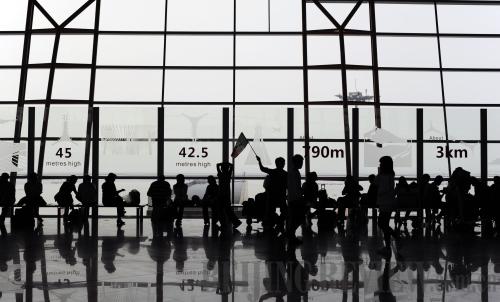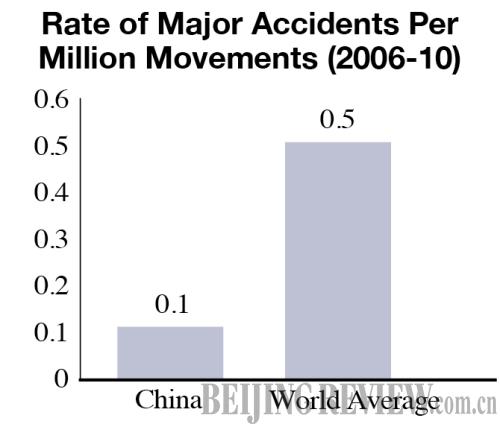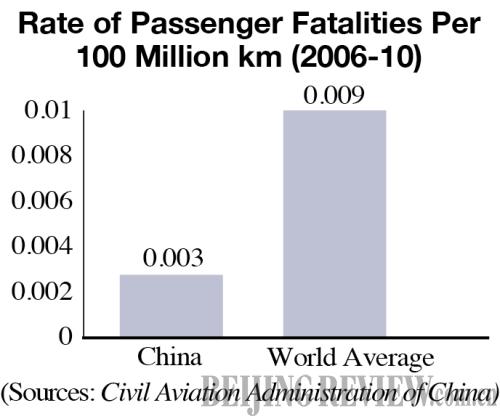|
 |
|
BUSY TERMINAL: Passengers wait for flights at Terminal 3 of Beijing Capital International Airport (LI MUZI) |
According to Li, of the 200 billion yuan ($30.4 billion) worth of commercial deals China made in November 2010 during President Hu Jintao's visit to France, 104.1 billion yuan ($15.82 billion) was spent on the Chinese civil aviation sector. During President Hu's visit to the United States in January this year, $19 billion was spent in the aviation sector out of the total $45 billion of commercial deals.
Higher hopes
The civil aviation industry will maintain the momentum of rapid growth during the 12th Five-Year Plan (2011-15) period, said Li.
"Although January is typically a slow month for the industry, statistics for January 2011 show all major indicators advanced by more than 10 percent year on year," he said.
Total air traffic in January grew 16.4 percent from a year ago, passenger traffic increased 16.8 percent and cargo and mail transport by 10.1 percent. The whole industry recorded total profits of 3.4 billion yuan ($516.72 million), up 611.4 percent compared with the same period last year, hitting a record high.
In the next five years, China plans to invest 1.5 trillion yuan ($228.2 billion) in its aviation industry, with the funds appropriated to the construction of 45 airports and the purchasing of 700 new commercial planes to meet surging demands, Li said. By 2015, the country is expected to have 220 commercial airports, and its fleet size will exceed 4,500 planes.
Despite concerns about the losses of regional airports, construction of such airports will speed up over the next five years. "Regional airports are public infrastructures and their construction should not be profit-driven," he said.
Li said the aviation transport industry can help promote local economic development, and the effect will be seen quickly.
"It takes two years to build an airport and the construction cost is equivalent to that for building 3 km of high-speed railways or 3 km of expressways," Li said. "But the role of 3 km of high-speed railways or expressways in promoting local economic development is limited. By building an airport, a region can be connected with the world."
Li used two airports as examples. Since Huai'an Airport in Jiangsu Province opened in 2010, it has attracted 61 foreign-invested companies to the city, while an airport in remote Tengchong County, Yunnan Province, has boosted local service industries, with its GDP rising 56 percent since the airport opened in 2009.
Li said in the next five years, the size of the Chinese commercial aircraft fleet will expand to 5,000, the passenger transport volume will hit 450 million persons and the number of commercial airports will increase by 45 to reach 220. Most of the newly added airports will be regional airports. The CAAC will accept new applications for establishing airlines, and currently there are three companies preparing to apply, Li said.
According to Li, besides building more airports and increasing the fleet, the CAAC will also take measures to strengthen airline competitiveness in the international transportation market in the next five years.
"The competitiveness of China's civil aviation industry on the international market is still weak," Li said. Domestic airlines take up only 46 percent of China's international passenger transport market and less than 30 percent of the country's international cargo transport market, he said.
"We will guide domestic airlines to further improve their international competitiveness," Li added.


| 